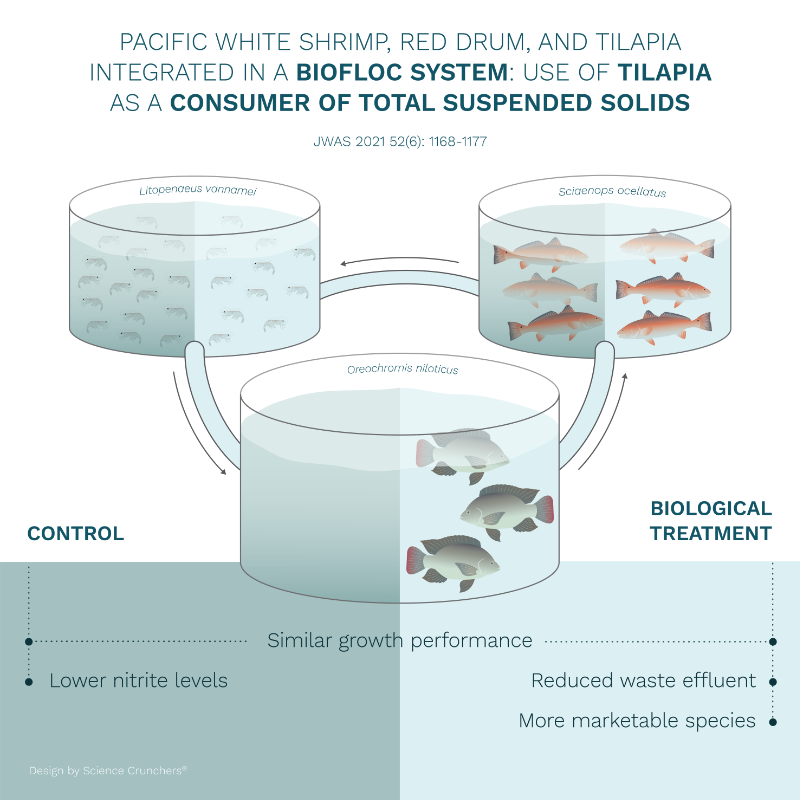JWAS Editor's Choice Awards 56(1)
The use of integrated multi-trophic aquaculture (IMTA) for multi-species culture is not new, but thi...

Suspended solids present a challenge in biofloc production system management as they can become excessive and require disposal / removal. Poersch et al added Nile tilapia, Oreochromis niloticus, as biological controllers of suspended solids in an integrated biofloc technology (BFT) system rearing red drum, Sciaenops ocellatus, and Pacific white shrimp, Litopenaeus vannamei. While all system, performance measures remained stable, the presence of Tilapia in the system significantly reduced particulate matter in the system. Appropriate co-culture of tilapia can control the suspended solids when integrated with red drum / marine shrimp culture with BFT in an integrated multitrophic system.
Bivalve aquaculture and the culture of other extractive organisms is increasingly popular globally as a sustainable marine food production. With increasing popularity and culture densities it is imperative that ecosystem carrying capacities are understood and respected. In their latest study Liu et al. take an ecological modelling approach to bivalve aquaculture in Jiaozhou Bay, China. They are able to show a clear seasonality of carrying capacities for all bivalve species studied and link reduced carrying capacity to increased temperatures. Their results indicate a clear linkage between primary production and carrying capacity for all species. The authors provide recommendations for reductions in seeding densities for key species, as well as providing a novel and suitable modelling method for others to apply.
Low water velocities, poor mixing and solids deposition can lead to suboptimal conditions in circular aquaculture tanks. Optimisation of tank inflows and design have been approached frequently. However, Sin et al. apply mathematical modelling using computed fluid dynamics to tank design and water in-flows. Their aim is to remove low-velocity zones and optimise water quality in land-based tank systems. They validate their modelling results in real-tank systems. Using an adjustable vertical nozzle pipe with several water outlets along the pipe length, they are able to achieve valuable reductions in low-velocity areas of tanks and vast improvements in mixing. Results provide practical methods for improving water quality and animal health in land-based culture systems.
Triterpinoid saponins are naturally occurring chemicals which may be a promising alternative to synthetic antiparasitic treamtents. In their recent study, Cañon Jones et al. tested various concentrations of Quillaja saponaria extract on larval Caligus rogercresseyi, which is responsible for sea lice infestations in the southern hemisphere. Concentrations of 500 ppm extract were sufficient to kill or stun infective larvae, with efficiency increasing with periods of exposure. With high levels of efficacy and negligible environmental concerns related to its use, Quillaja saponaria extract may be a valuable addition to the tools available to aquaculture producers battling the significant economic and animal welfare challenges created by sea lice infestations. Future studies must determine extract effects on salmonids and suitable treatment methods.